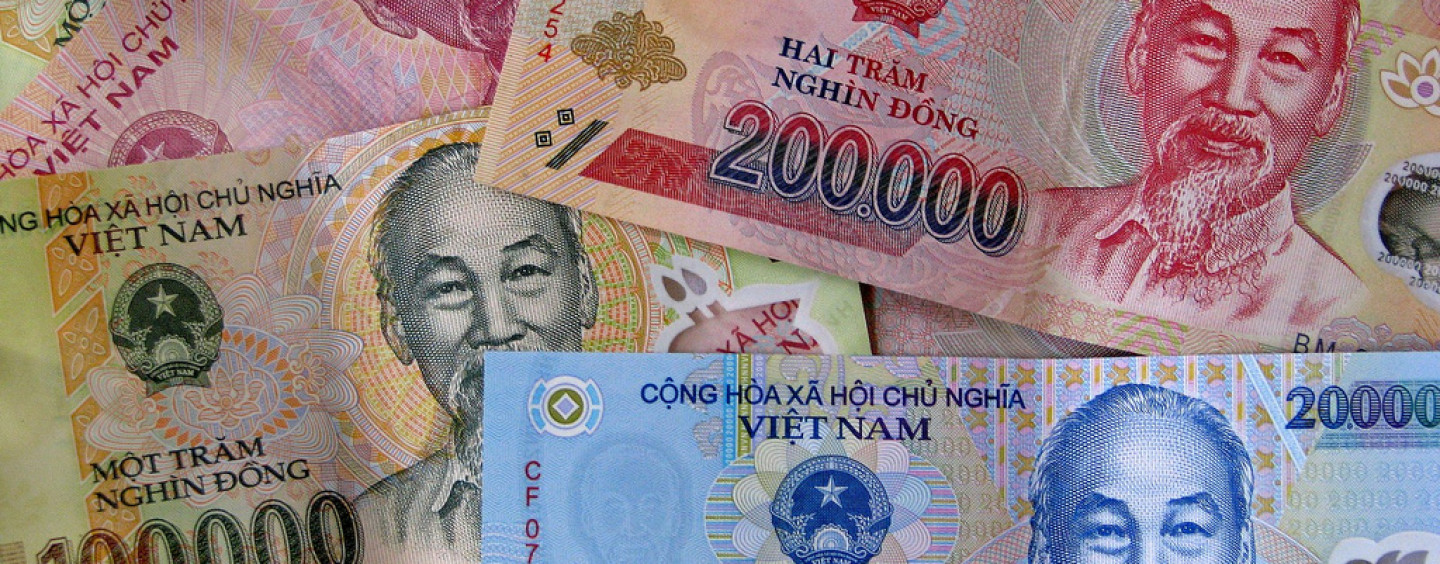Access to and use of formal financial services is low in Vietnam compared with other countries in the region, with only 31% of all adults having formal bank accounts in 2014, according to the World Bank.
14.6% percent of Vietnamese had saved money with a formal financial institution in 2014, 18.4% had a loan with a formal financial institution, and only 26.5% had access to a debit card. Interestingly, about 30% of adults borrowed from friends or family in 2014 in Vietnam, against 18.4% who have borrowed from a financial institution.
Small and medium-sized enterprises (SMEs) as well have been struggling to borrow from banks, with only one-third of SMEs having gained access to credit, according to data of the Vietnam Chamber of Commerce and Industry.
Lending to SMEs is tightened now given a high bad debt ratio in the banking system. Furthermore, interest rates in Vietnam are much higher than in regional countries. (around 9% for VND saving deposits)
Peer to Peer Lending and Crowdfunding Platforms in Vietnam
In recent years, peer-to-peer (P2P) lending platforms have emerged to provide an alternative financing method to businesses and individuals in Vietnam.
P2P lending is the practice of lending money to individuals or businesses through online services that match lenders directly with borrowers. P2P lending has surged in popularity. The global P2P lending was worth US26.16 billion in 2015.
According to Transparency Market Research, the market valuation will reach US$897.85 billion by 2024, as it expands at a significant CAGR of 48.2% from 2016 to 2024.
Several Peert to Peer Lending and Crowdfunding platforms exist in Vietnam.$
HuyDong, formerly known as LoanVi, focuses on personal loans. Founded in 2015, the company aims at bridging the gap between the underbanked population and investors. The solution provides individuals with affordable credit from investors through a secured, risk-controlled process. Investors can enjoy solid fixed-income returns.
HuyDong is a subsidiary of Finsom Joint Stock Company, a registered entity.
Very new is the Peer to Peer Lending platform Tima, which recently claimed to get 7 digit funding from an undisclosed Singapore investors (7 digits in which Currency? could be 1’000’000 SGD or whatever). However, they did not disclose further informations regarding investors and funding and also the volume numbers disclosed seemed confusing. Tima emerged out of MeCash.
Both platforms HuyDong(LoanVI) and Tima claims to be the first peer peer lending platforms in Vietnam. When googling Peer to Peer Lending Vietnam HuyDong is currently number one in the search results.
Next to peer to peer lending platforms Vietnam also has several Crowdfunding platform. For example FundStart a crowdfunding platform that allows entrepreneurs to raise fund from the crowd, “turning dreams into reality with funds coming from the community.” FundStart aims at supporting innovative startups with great ideas and vision.
Similar solutions include FirstStep, Betado, and Comicola, which focuses on the cartoon industry. An overview about Crowdfunding platforms in Vietnam can be found here.
Regulations needed
The idea of P2P lending is attractive to many people. Borrowers and lenders circumvent the banks and get receive better rates. However, P2P lending carries important risks.
In mainland China, where P2P platforms have mushroomed since 2007, 3,000 platforms are said to be problematic, which included cases of fraud of firms going out of business, an annual report on the nation’s Internet finance unveiled in September.
Earlier this month, Chinese authorities promulgated new rules for P2P lenders. These are designed to minimize fraud, and to tamp down the rapid, uncontrolled growth of the sector.
The new regulations create a new category of restricted businesses for China-based P2P players, including illegal fundraising, forming capital pools and false advertising, among other prohibitions.
Additionally, P2P firms may not offer other financial industry services such as asset management and share transfer without being fully licensed and approved by the authorities.
The new regulations also limit borrowing to RMB 1 million (US$150,000) for individuals and RMB 5 million (US$750,000) for businesses. These limits apply to total borrowing from multiple platforms.
At the same time, the UK financial regulatory has announced a crackdown on crowdfunding. The Financial Conduct Authority (FCA) said it had concerns about P2P lending and investment-based platforms.
The authority said it was difficult for investors to understand the risks and returns of crowdfunding, marketing material was sometimes unclear and misleading, and some firms did not manage risks and conflicts of interest properly.
“We have seen substantial innovation in the loan-based crowdfunding market. What we are trying to do is strike the right balance between enabling innovation and protecting consumers,” said Andrew Bailey, the FCA’s chief executive, as quoted by the Guardian. “Are they marketed transparently? We’ve seen firms which say: ‘We’ve got a reserve fund and no one has lost money on our platform.’ But there is no guarantee.”
The volume in Vietnamese peer to peer lending platforms seems to be still very low, some insiders confirm. The problem is here , its all about trust in Vietnam and it will be difficult to bring borrowers and lenders on this platforms, and of course regulation could make those platforms problems. However, when doing right the future might be bright in peer to peer lending in Vietnam. Let’s watch.
An overview about all Fintech Platforms in Vietnam can be found here.
Featured image: Vietnamese Dong by https://johnib.wordpress.com/.







